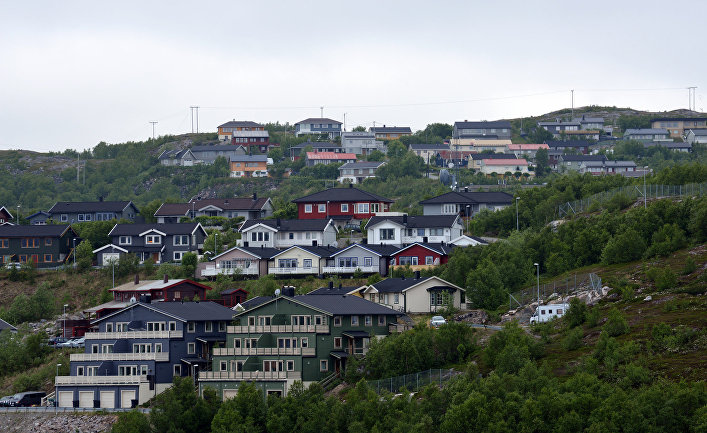
Boys sitting in a circle, in which only boys. They hug each other and tell each other positive and encouraging words. Girls who stand in a circle, in which only girls and say: “I am strong”.
Every day in Iceland this and other types of what is referred to as “exercise in equality”, done about two thousand children of preschool and school age.
“We call it compensation,” says teacher and founder of the model Allacapan (Hjallastefnan) Margret Pala Olafsdottir (Margrét Pála Ólafsdottir).
If they are together, it’s for the benefit of anyone not going
The main thing — the fight for equality. Positive segregation or separation, which uses the principle of the separation of the sexes is a means of influence number one. At least two-thirds of the day spent in kindergarten or school, the two sexes performed separately.
“It is believed that it is great when little boys and girls spend time together, but is it really? We believe that there is,” says Olafsdottir and continues:
“The findings suggest that children at an early age is not good, when boys and girls spend time together. In a period when forming their gender identity, they will look for role models among their own sex. However, they seem to be reflected in the opposite field to learn how they should behave and what they should not do.
Girls behave like boys and Vice versa
Model Allacapan, girls see that the boys are seated, make noise and play as boys, i.e., how they themselves do not want. On the other hand, boys see that girls play and do something “girly”, how do they communicate with each other and adults, and want to avoid this behavior.
“This reflection leads to the fact that boys and girls is produced by unilateral conduct and unilateral appear area of interest, though actually they need to create their own identity”, — said Olafsdottir.
Olafsdottir beginning to use this philosophy in kindergarten Cattle (Hjalli) in Hafnarfjorour (Hafnarfjörour), South of Reykjavik 27 years ago. Since then, this mindset has spread to several Icelandic towns and villages, to date, this model has 19 kindergartens and schools. In Norway, too, there is one kindergarten, using the model Cattle, in the city of Skien (Skien).
Both sexes become more equal?
— What do you do when you give girls and boys the opportunity to spend most of their time separate from each other?
— I hope and believe that we can help them find the best version of themselves. We strive to make both sexes more similar to each other, but we teach children the human qualities and skills because there are skills or qualities only for girls or only for boys, no matter what we have laid down all of them. We want to break traditional gender roles and expectations of how girls and boys should behave.
And a feminist, and masculina culture in which growing girls and boys, have their weaknesses. We try to give them what they have. Boys and girls learn the same, but the approach and the priorities are different, that is why we call this compensatory activity.
Norwegian sexologist: Today it is not needed
Sexologist Jorgen Lorentzen familiar with the ideas Olafsdottir. About 15 years ago he was in Iceland and visited one of the kindergartens.
“I had the impression then, and it hasn’t changed that in kindergartens is shown very holistic view of gender roles, they treat children seriously and helping them to become competent in many ways, so we, in Norway, there is a lot to learn here,” he says.
But Lorentzen believes that this pedagogical method is the imprint of what he developed over 20 years ago and was supposed to be a counterweight to legacy samples of gender roles, which led to the fact that the boys were not really in a state about whom to care, while girls were less competent in such areas as achievements and career.
“Today in this no need. Happened so many changes, talking about this and a variety of statistics, for example, about gender stereotypes at home and at school,” he says.
“It can be a useful pedagogical technique”
Therefore, Lorentzen is not a supporter of dividing the groups by gender to the model Cattle is a common technique.
“I think the goal should be that boys and girls should be together, and considering the perspectives of learning, and because both sexes have to live and work together throughout life. If groups of children to share based on gender, then it must be done in order to provide positive changes, in case if you found any imbalances, and then it can be a useful pedagogical technique. From my own experience, I can say that some Norwegian kindergartens can derive considerable benefits, if you dare to use this system to give children greater competence regardless of gender”.
“We need to stop trembling before masculine culture and quality”
Olafsdottir believes that the weakness of the “girl culture” can be lack of courage, fear of making a mistake, and the girls can develop a negative attitude toward ourselves, sometimes to others.
“We teach them to use their body, their voice. We teach them to brag about themselves, and thus teach them positive words and concepts which they can use in later life. Any laws and regulations relating to equality will not help if we do not teach girls how to stand up for themselves. On the other hand, have little to say about the weaknesses of the masculine culture. This is because we respect the culture and masculine qualities, it was time to finish,” she said.
“The boys also teach the individual skills, but boys groups focused on working on weaknesses in their culture — development of social qualities and skills and fine motor skills.
When boys and girls mix in some classes in kindergartens that use the technique Cattle, it is not in order to teach them something new, but in order to learn to treat each other with respect.
“It’s not how much time they spend together, it is important for the quality of that communication.”
Criticism: They turn boys into homosexuals
The method Cattle been criticized for all these years. Criticize political parties, academics and “ordinary people”.
“I’ve heard that this model is trying to make both sexes more similar that we are trying to turn boys into homosexuals, to impose the equality at such an early age is meaningless. It was a mixture of criticism and criticism is understandable, the result of prejudice and lack of knowledge. In recent years, we do not criticize. Can’t say that we are popular everywhere in Iceland, but we do not set ourselves such a goal. We need kindergartens and schools of different type, it is not necessary that all tried to do what we do, but gender aspects need to pay attention to everything,” says Olafsdottir.
So Olafsdottir hopes that the technique can be exported to different places in Norway, not only in Skien.
“I think that this technique can work anywhere, and in the Scandinavian countries, where we pay so much attention to equality, ideas of our method should be applied especially,” she says.






